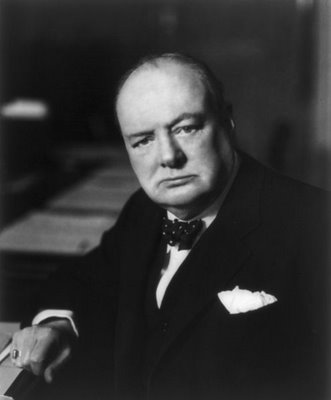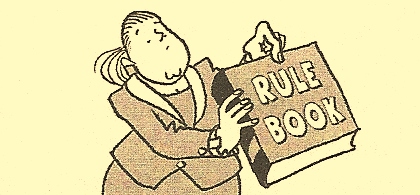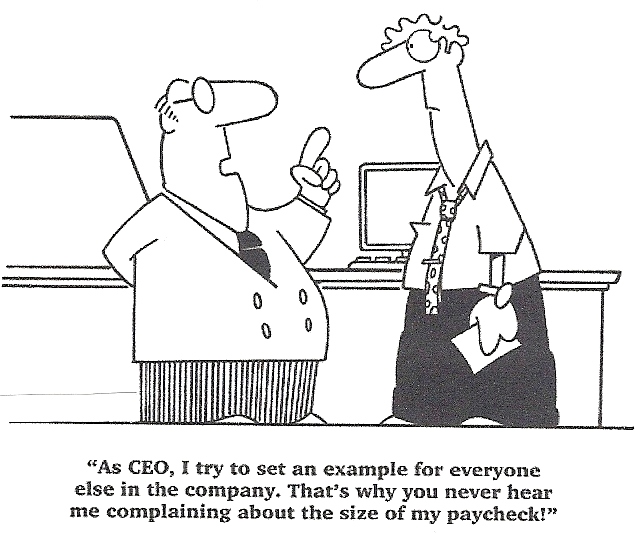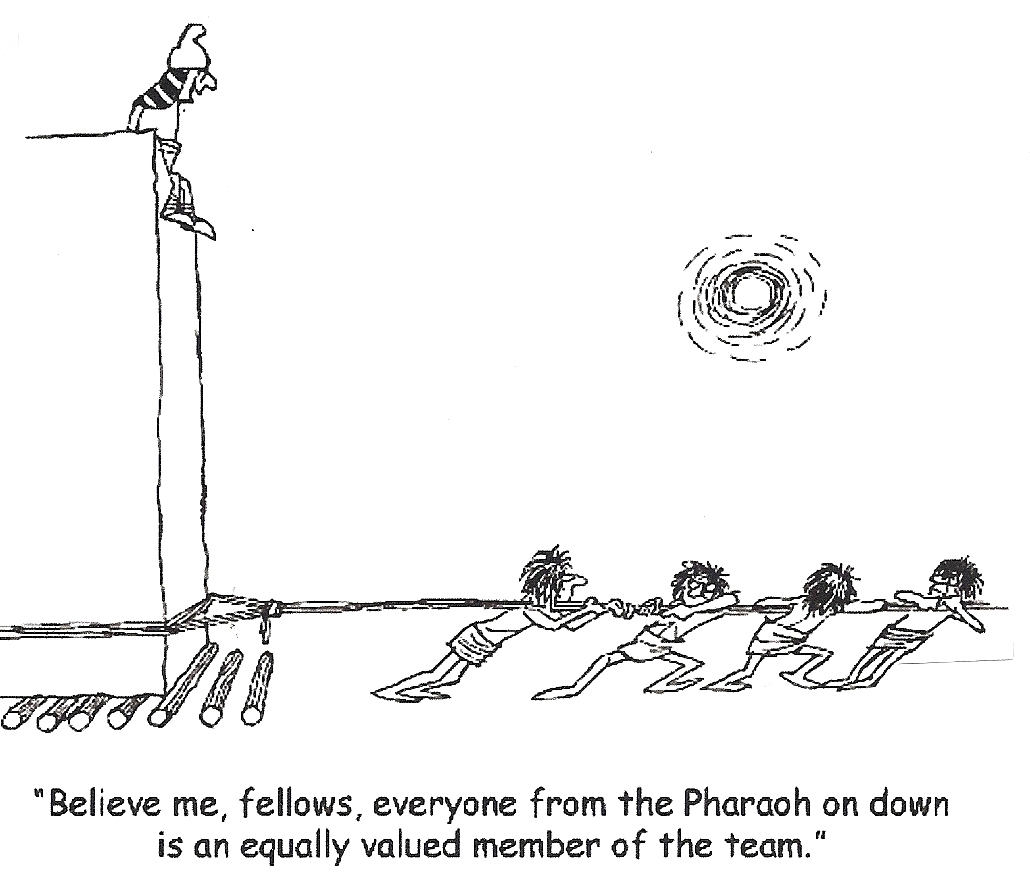
- •Improving Communications
- •Oral communications
- •Written communications
- •7 Tips to become a Good Conversationalist
- •Six Common Mistakes That Spoil Conversations
- •1. Blabbermouthing
- •2. The "take-away" and "me-too" syndrome
- •3. Unsolicited advice
- •4. Interrupting
- •5. Contradicting
- •6. Stingy contributors
- •8 Правил знайомства з діловими партнерами
- •18 Ways to improve your body language
- •6 Чарівних букв
- •Voice and Language
- •Visual aids
- •Fail to prepare
- •No weak opening
- •When I know I have to make a presentation, even a small one before a very limited number of people, I start feeling nervous…
- •When a big meeting is coming up, one that will involve a number of presentations from a range of people…
- •I would say my ability as a presenter is…
- •While I am up on stage, I…
- •Comments about my presentations are generally…
- •If I have to go “off the cuff”…
- •If I could describe public speaking as a food, it would be…
- •Visual aids versus handouts
- •Я к вдало провести ділову зустріч.
- •Introducing the Agenda
- •Introducing the First Item on the Agenda
- •1. What is the desired outcome of the meeting? (How will you know the meeting was successful?)
- •2. Who needs to be there? (And who doesn’t?)
- •3. Is the agenda prepared? (If not now, when?)
- •4. What can I do to prepare? (How can I help others prepare?)
- •5. What can I do to make this meeting succeed? (What is my responsibility?)
- •Discuss the following questions:
- •Exercise 6
- •Negotiating
- •Well, we could make it 7,5 % .
- •The trouble is, the general manager isn't very interested in marketing. He's only concerned about …..5…... If you make it 10%, I might be able to persuade him.
- •But you said…
- •6 Найпоширеніших помилок при проведенні переговорів
- •Communicating with someone in writing
- •The salutation
- •The subject title
- •The body of the letter
- •The parting
- •The signature
- •Inquiries (Enquiries)
- •Поради при написанні ділових листів
- •……………: Always proofread and edit your letters.
- •Avoid the use of …..1….. Words
- •Informal Style Formal Style
- •Identify yourself, if necessary
- •Include necessary information
- •Ten keys to writing an essay
- •Budget your time carefully
- •Read the topic carefully
- •Plan your essay before you write
- •Be sure your handwriting is as clear and legible as possible
- •Follow a clear, logical organization
- •Topic Type a: Contrast/Opinion
- •Use concrete examples and specific reasons
- •Use signal words to indicate transitions
- •Use a variety of sentence types.
- •Check your essay for errors.
- •Електронна пошта
- •Chief, Guy, Sport
- •My Buddy
- •Assumption Junction
- •Peak-a-Boo
- •2 (Suggested answer)
- •Listening 4
- •Contents
- •References
Електронна пошта
Більшість користувачів, які проводять в Інтернет досить часу, сприймають електронну пошту як щось дуже природнє. Вони вже не дивуються чаклунству, яке переносить повідомлення за долі секунди на край світу. Проте жаль! Електронна пошта у свій час надала імпульс створенню мережі. Це сама універсальна послуга Інтернет ще й досі є самою популярною у всіх сферах діяльності користувачів.
Електронною поштою можна надсилати не тільки письмові повідомлення, але й документи, графіку, аудіофайли, програми.
Насправді, більшість користувачів навіть самі не мають уяви про справжні можливості електронної пошти. Користувач може усвідомлювати себе великим асом у своїй справі, коли надсилає своє повідомлення і додає до нього файл. Проте, сучасна пошта Інтернет дозволяє значно більше. Ця технологія весь час розвивається, трансформується. Можна знайти багато дешевих пакетів програмного забезпечення, яке здатне поширити уявлення про можливості електронної пошти.
Яким чином функціонує електронна пошта
Щоб обмінюватись кореспонденцією за допомогою електронної пошти потрібно мати спеціальну програму, яка називається mailer. Вона надає змоги редагувати текст, вводити адресу одержувача, надсилати повідомлення тощо.
Що ж таке сучасний пакет E-mail?
Сучасний пакет E-mail має добре організований інтерфейс користувача, який не потребує багато часу і сили для засвоєння, та забезпечує такі функції:
підписи;
адресні книги;
додатки;
поштові скриньки для листів, які входять і виходять;
фільтрацію/маршрутизацію;
універсальну поштову скриньку.
Деякі поради щодо використання електронної пошти
ніколи не довіряйте електронній пошті ті листи, які Ви не повинні переглядатись кимось, крім тих кому вони надіслані;
не надсилайте неетичних повідомлень навіть тоді, коли Ви звертаєтесь до своїх друзів; адміністратори мереж несуть відповідальність за роботу мережі, тому вони можуть отримати скарги від користувачів на Вас;
будьте обережні з фразами, які можна тлумачити різним чином;
повідомлення буде відображатись на будь-якому терміналі, якщо воно має не більш 60 символів в рядку;
використовуйте обидва регістри букв. Великі літери можна використовувати для надання емоційності деяким словам листа;
перед відправкою повідомлення ще раз уважно його передивіться. У більшості випадків користувач сам несе відповідальність за зміст свого листа.
|
|
You've heard the expression "He/She is a born leader." Are all leaders born? Or can leadership be learned? Leadership can be learned. We all have leadership potential, just as we have some ability to sing or run. Some people may be better than others, but each of us has a starting point to build on with training and practice.
There is no secret recipe or magical formula to become an effective leader overnight. It is a process of trial and error, successes and failures. Never stop learning, and with practice you can increase your success in leadership!
The future will require those of us in such positions to keep our eyes, ears and minds open. It will require us to listen and to involve, to coach and to develop, to enrich and to motivate, to risk and to credit, to care and to express concern, and to laugh - especially at ourselves.
It’s the biggest question in management literature what’s the secret of leadership?
Look at the list of leaders from the past and present. They all have one vital thing in common. What is it?
Listen to the tape and compare your ideas with the answer.
Julius Caesar Mahatma Gandhi Winston Churchill Mao Tse-Tung Bill Gates John F. Kennedy Saddam Hussein the Buddha Margaret Thatcher Socrates Osama bin Laden Richard Branson Martin Luther King |
A
Look at the pictures and answer the questions.
What do you know about the leaders pictured below?
Which modern or historical leaders do you admire most?
Which do you admire least? Why?
What makes a great leader? Write down a list of characteristics.
Compare your list with other groups.
Are there differences between men and women as leaders?
Are people who were leaders at school more likely to be leaders later in life?
What makes a bad boss?
What is the difference between a manager and a leader?
|
|
|
|
|
|
|
|
|
B
Definition of Leadership
There are many diverse definitions of leadership.
Read the definitions. Which of them, in your opinion, is the best? Why? Give your own definition of the term.
Peter Drucker: "The only definition of a leader is someone who has followers."
John C Maxwell: "Leadership is influence - nothing more, nothing less”.
Warren Bennis: "Leadership is a function of knowing yourself, having a vision that is well communicated, building trust among colleagues, and taking effective action to realize your own leadership potential."
Roman Catholic Diocese of Rochester: "The process of influencing the behavior of other people toward group goals in a way that fully respects their freedom."
C
Quotations about leaders
If your actions inspire others to dream more, learn more, do more and become more, you are a leader.
A leader is one who knows the way, goes the way, and shows the way.
The very essence of leadership is that you have to have a vision.
A leader has the vision and conviction that a dream can be achieved. He inspires the power and energy to get it done.
The best leaders are those most interested in surrounding themselves with assistants and associates smarter than they are. They are frank in admitting this and are willing to pay for such talents.
Skill in the art of communication is crucial to a leader's success. He can accomplish nothing unless he can communicate effectively.
Leadership is the wise use of power. Power is the capacity to translate intention into reality and sustain it.
Leadership is the art of getting someone else to do something you want done because he wants to do it.
Management is doing things right; leadership is doing the right thing.
D
What makes a good leader?
Look at the picture below. Which of these qualities should a real leader possess?
Rank them in order of importance.

E Boss or Leader?
1. Give your comments:
2. Read the following statements and decide if you agree with them.
3. A-E below are responses to the statements above. Match them to the statements.
Define the statements as True or False. Give arguments to prove your choice. Leadership Quiz
Leadership versus Management Leadership and management are terms that are often used interchangeably in the business world to depict someone who manages a team of people. In reality leadership versus management have very different meanings. To be a great manager you must understand what it takes also to be a great leader. What is the difference between management and leadership? It is a question that has been asked more than once and also answered in different ways. The biggest difference between managers and leaders is the way they motivate the people who work or follow them, and this sets the tone for most other aspects of what they do. Many people, by the way, are both. They have management jobs, but they realize that you cannot buy hearts, especially to follow them down a difficult path, and so act as leaders too. Managers have a position of authority vested in them by the company, and their subordinates work for them and largely do as they are told. Management style is transactional, in that the manager tells the subordinate what to do, and the subordinate does this not because they are a blind robot, but because they have been promised a reward (at minimum their salary) for doing so. Managers are paid to get things done (they are subordinates too), often within tight constraints of time and money. They thus naturally pass on this work focus to their subordinates. An interesting research finding about managers is that they tend to come from stable home backgrounds and led relatively normal and comfortable lives. This leads them to be relatively risk-averse and they will seek to avoid conflict where possible. In terms of people, they generally like to run a 'happy ship'. Leaders do not have subordinates - at least not when they are leading. Many organizational leaders do have subordinates, but only because they are also managers. But when they want to lead, they have to give up formal authoritarian control, because to lead is to have followers, and following is always a voluntary activity. Telling people what to do does not inspire them to follow you. You have to appeal to them, showing how following them will lead to their hearts' desire. They must want to follow you enough to stop what they are doing and perhaps walk into danger and situations that they would not normally consider risking. Leaders with a stronger charisma find it easier to attract people to their cause. As a part of their persuasion they typically promise transformational benefits, such that their followers will not just receive extrinsic rewards but will somehow become better people. Although many leaders have a charismatic style to some extent, this does not require a loud personality. Although leaders are good with people, this does not mean they are friendly with them. In order to keep the mystique of leadership, they often retain a degree of separation and aloofness. This does not mean that leaders do not pay attention to tasks - in fact they are often very achievement-focused. What they do realize, however, is the importance of enthusing others to work towards their vision. In the same study that showed managers as risk-averse, leaders appeared as risk-seeking, although they are not blind thrill-seekers. When pursuing their vision, they consider it natural to encounter problems and hurdles that must be overcome along the way. They are thus comfortable with risk and will see routes that others avoid as potential opportunities for advantage and will happily break rules in order to get things done. The debate between leadership and management has been raging for a number of years. "There is a profound difference between management and leadership, and both are important. To manage means to bring about, to accomplish, to have charge of or responsibility for, to conduct. Leading is influencing, guiding in a direction, course, action, opinion. The distinction is crucial" – Warren Bennis. In his book "On Becoming a Leader" he describes his view of the differences between managers and leaders as follows:
Another influential thinker on the distinction between management and leadership is John Kotter author of " What Leaders Really Do". In the book John makes the following observations: “Leadership and management are two distinctive and complementary systems of action…… Both are necessary for success in an increasingly complex and volatile business environment.” “Most U.S. corporations today are overmanaged and underled.” “Strong leadership with weak management is no better, and is sometimes actually worse, than the reverse.” “Management is about coping with complexity….. Without good management, complex enterprises tend to become chaotic… Good management brings a degree of order and consistency…." "Leadership, by contrast, is about coping with change…. More change always demands more leadership.” “Companies manage complexity by planning and budgeting, by organizing and staffing, and by controlling and problem solving. By contrast, leading an organization to constructive change involves setting a direction (developing a vision of the future and strategies to achieve the vision), aligning people, and motivating and inspiring them to keep moving in the right direction." The fact is that leadership and management are both important, they are two distinctive systems of action, both are necessary, and each seeks to do different things. Where do you find yourself spending the majority of your time? Managing or leading?
Reading comprehension Exercise 1
Define the statements as True or False.
Exercise 2 Answer the questions.
Exercise 3 Explain the statements below:
Exercise 4 Fill in the gaps with suitable words to characterize the leaders and managers.
Translate into Ukrainian. But what is leadership? It seems to be one of those qualities that you know when you see it, but is difficult to describe. There are almost as many definitions as there are commentators. Many associate leadership with one person leading. Four things stand out in this respect. First, to lead involves influencing others. Second, where there are leaders there are followers. Third, leaders seem to come to the fore when there is a crisis or special problem. In other words, they often become visible when an innovative response is needed. Fourth, leaders are people who have a clear idea of what they want to achieve and why. Thus, leaders are people who are able to think and act creatively in non-routine situations – and who set out to influence the actions, beliefs and feelings of others.
Work with your partner. Take one of the cards. Speak about managers or leaders. Use the prompts and the information from the text. 1
2
1. Discuss these questions. Imagine you are the leader of a large company.
2. Listen to an interview with Marjorie Scardino, Chief Executive of the media Pearson plc. What answers does she give to the questions in exercise 1? Make notes as you listen.Discuss these questions.
Exercise 1
1. Think of someone in a position of power. List three positive and three negative things about them. Then compare ideas with a partner.
2. Which adjectives below describe positive aspects of someone’s character? Which describe negative aspects? Write + or – next to each one.
3. Can you think of adjectives with opposite meaning to the ones above?
Exercise 2 Leadership or Management?
Here are five things that well-known people have said about leadership and management. Discuss which of the quotation are about management and which are about leadership, and choose some of the words to complete the sentences. lead leaders leadership leading manage manager management managing
Exercise 3
1. Complete the sentences with the words below.
2. Match the words with similar meanings.
3. Complete the article with words from 1and 2.
The Art of Delegation Getting something done is only half the job. Keeping staff happy at the same time is every bit as important. Many ..…1….. believe that getting work done through others requires a free flow of information and open, productive relationship with ..…2….. . Rather than creating a climate of ..…3….., they give clear instructions and realistic deadlines and take care to give only constructive criticism and not …..4…..employees. They work towards creating a positive working environment where …..5…..feel valued and trusted. Some specialists say that it is essential not to criticize, as this rarely …..6…..and often causes stress and loss of confidence among the …..7….. . Managers who successfully maintain the balance of power will not lose their authority even when certain …..8…..members take control of projects. This style of management is particularly important during an economic upswing when employees can easily find work with another company.
Exercise 4
The role of the leader is much like that of the conductor of an orchestra. The real work of the organization is done by the people in it, just as the music is produced only by the members of the orchestra. The leader, however, serves the crucial role of seeing that the right work gets done at the right time, that it flows together harmoniously and that the overall performance has the proper pacing, co-ordination and desired impact on the outside world. The great leader, like the great orchestra conductor, calls forth the best that is in the organization.
Exercise 5 Translate from English into Ukrainian. When discussing business leadership, the distinction between good management and good leadership is often made. Managers are thought to be the budgeters, the organizers, the controllers — the ants, as one observer puts it — while leaders are the charismatic, big-picture visionaries, the ones who change the whole ant farm. But such a construction, those interviewed for this article agree, erroneously leads to a bimodal way of looking at something that should really be evaluated on two separate scales. “Everybody has got a little bit of each in them,” says John Kotter, who admits he is sometimes guilty of using the dichotomy in an effort at simplification. “It’s much better to think in terms of measuring people on a zero-to-ten scale for each quality.”
Bosses and You Talk about these questions:
1. David Hargreaves is the HP manager at Radius Group. You will hear him talk about managing people. Before you listen, answer these questions.
2. Now listen and answer the questions.
Leadership Types and Styles What are the leadership types and styles? First let’s differentiate between what are leadership styles and types of leaders. Apart from being two different theories, business leadership styles are something which may vary in every. A different leadership style may be required under different circumstances. On the other hand, types of leaders remain more or less fixed and depend on disposition of the leader in concern. So basically, while a leader may modify his style to suit a certain situation, his type remains more or less the same. Leadership Styles There are three basic leadership styles, which a leader employs to get the work done. They are:
Authoritarian leadership is a type of leadership where the leader has control over all the actions of the group. There is a clear line between the management and the employees, and the flow of communication is largely up-to-down ( i.e. the employees have no say in the decision making process, and all the orders of the management need to be followed unquestioningly).
The next style is known as participative leadership. In this style, there is still a clear line of difference between employees and employers, but the employees are encouraged to come up with suggestions and take an active part in the decision making process. This style fosters a good employee-employer relationship and isn't as extreme as authoritarian or laissez-faire style of leadership.
In a way, this isn't a style of leadership at all! Laissez-faire style of leadership means that anyone and everyone is empowered with the opportunity to take their own decisions. It may sound good, but more often than not, it leads to a chaotic situation. Laissez-faire leadership is best implemented only within a group which shows good group-dynamics, is highly motivated and needs its creative space, for e.g. a research and development department. Types of Leaders Historically there have been several types of leaders:
In the 1930s Mahatrna Gandhi was able to influence most of his fellow Indians to resist British rule. Although Gandhi never used force or violence of any type, Great Britain gave rule to the Indians shortly after the end of World War II. Gandhi was able to define what the people of his country wanted and to exert the type of pressure needed to get it accomplished. When he was assassinated by one of his former followers, much of the world mourned. Martin Luther King inspired many people to help free black people from segregation and discrimination in the United States. He was able to define what both many white and black people felt was right and then showed them ways of accomplishing their goals. Although he was ultimately assassinated, there is little doubt of his charisma and his leadership. In all societies there have been charismatic leaders. Their force of personality, determination, and willingness to take extraordinary risks are difficult to challenge.
Throughout history many people have been thrust into leadership roles by birth or kinship. Throughout most of the history of humankind, leadership has been inherited. Emperors, czars, kings, queens have inherited their leadership. In industry some leaders have achieved their status by kinship. While many traditional leaders have been mediocre or worse, some have had remarkable success. IBM can trace its entrance into the electronic computer age to the insistence of Thomas Watson, son of the company's founder. Since its beginnings Ford Motor Company has had a succession of Fords become chief executive officers. Except for a few notable exceptions traditional, inherited leadership rarely exists in developed societies.
In every group some individuals, because of their personality, credibility, willingness to speak for the group, become informal leaders. They are expected by other members to represent the work unit to which they belong. In some situations more than one informal leader may emerge. Frequently these informal leaders are promoted to formal leadership positions because of their dedication, willingness to represent others, and sense of what is needed. Although not all informal, emergent group leaders become formal managers, many succeed in entering management ranks. Their willingness to represent the views of others as well as a strong sense of purpose serve them well.
All managers are not leaders, even though they tend to think they are. Managership and leadership are not the same. In work organizations people are sometimes promoted because they are efficient and effective employees. They may have good organizational, planning and analytical skills but do not do well in building enthusiasm and dedication in employees. Although their management skills are recognized, they lack the ability to inspire others to excel. Those managers who have both management skills and leadership ability are usually more successful in working with others to accomplish organizational goals. It is unfortunate that promotions, especially to first-line positions, do not always require leadership potential. First-line supervisors must learn to be leaders as well as managers or slip into mediocrity. Let’s consider one more classification of leadership types. The type of a leader depends on his overall disposition rather than the situation. A leader will have one or more of these leadership qualities inherently. Hence, it’s essential that while looking for someone who will occupy the post of the leader, one checks the type of leader the organization really needs, otherwise, it would be a useless exercise. The leadership types are:
Democratic leaders are those who encourage participation of the workers in the decision making process. Collaboration and team spirit are best fostered with the help of this leadership style. Democratic leaders require good, intelligent and motivated workers.
Pace-setting leaders believe in setting an example with their own superior quality of work. A pace setting leader aims to set the performance benchmark himself. This style of leadership thrives best in a highly competitive environment where both, leaders and subordinates strive to achieve their potential.
Coaching leadership type encourages the subordinates to learn from the leader. This style of leadership is most effective in an environment, where the employees are young and need to be trained properly. Effective coaching the employees, helps build better long-term relationships.
A visionary leader is one who drives his subordinates towards a common goal. It is said to be the most effective leadership style. The motivation is not in terms of any monetary compensation, but it’s the very idea of striving to create a better company, which drives the employees into action. But the vision of the leader must be the one which is compelling as well as achievable.
An affiliative leader is one who believes in progressing as well as maintaining a good relationship with the employees. An affiliative leader is one whom the employees will like and will be more of a guide to them than a leader.
The last type of leader is the commanding leader. This is an autocratic leadership style. He, and he alone is the boss and no one dare to infringe his range of power! Few commanding leaders have shown success till date, but those who have, have shown phenomenal growth in the company.
Reading comprehension Exercise 1 Define the statements as True or false.
Exercise 2 Answer the questions.
Exercise 3 What type of leaders are they?
Exercise 4 Complete the chart using the information from the text
Which type of leader are you? The Entrepreneur, The Manager, and The Charismatic -- these are the three types of brilliant leaders. No doubt, you're one of them. Find out which.
1. In which business life stage (or cycle) have you been most successful?
2. What is your tolerance for risk?
3. How important do you consider prevailing economic conditions in determining business success?
4. What best describes your approach in business?
5. Businesses, you feel, most effectively generate value through...
6. What type of business environment best suits your personality?
7. Where do you see the greatest opportunity in a business?
8. What is your definition of successful leadership?
9. What is the best way to defeat your business competitors?
10. What business executive do you most admire?
If you chose 'a' four or more times: You're a great entrepreneur . Your type breaks through the mold of your time to create opportunities for success. You create new, sustainable concepts for the future, revolutionizing industries, processes, or businesses. Plus, you often overcome obstacles to create and sustain success. Perhaps you'd like to start a new industry today? If you chose 'b' four or more times: You love maximizing the value of a company that already exists. In other words, you're a true manager. You might not transform what a corporation is, but you can certainly change its size and scope. You deeply understood the landscape in which you operate and take advantage of the hand you're dealt to shape businesses that thrive in this environment. If you chose 'c' four or more times: You've got a star quality, baby. You're a charismatic leader. You can convince people to do just about anything. You're not exactly an innovator, though: You find the value in the trends and contexts set by your predecessors. Still, you'll often consolidate businesses and industries and are skilled at taking advantage of their situation. Although, really, we're guessing you'd rather drive a Porsche than a Sebring.
Translate into English.
В більшості словників лідер це той, хто має вплив в групі і відтак спроможний нею управляти. Спосіб цього впливу — формальний чи неформальний, універсальний чи ситуативний, емоціональний чи раціональний — найчастіше береться до уваги. Хто такий лідер? Вебер виділяє три типи лідерства — традиційне, харизматичне та легальне. Кожен з типів має свої найбільші ризики. Найбільшим ризиком традиційного лідерства є відхід від традицій. Найбільшим ризиком легального лідерства є порушення законів та обмеження прав прихильників лідера. Найбільшим ризиком харизматичного лідерства є ситуація, коли удача відвертається від лідера і його ірраціональна привабливість зазнає краху.
Exercise 1 Fill in the gaps with a suitable verb from the box.
Five different types of leaders An interesting article in Harvard Business Review by Gary Willams and Robert Miller …..1….. that executives typically fall into one of five decision-making categories: Charismatics can be initially exuberant about a new idea or proposal but will …..2….. a final decision based on a balanced set of information. Thinkers can …..3….. contradictory points of view within a single meeting and need to cautiously work through all the options before …..4….. to a decision. Skeptics …..5….. highly suspicious of data that don't …..6….. with their worldview and make decisions based on their gut feelings. Followers make decisions based on how others …..7….. executives, or they themselves, have made similar decisions in the past. Controllers tend to …..8….. on the pure facts and analytics of a decision because of their own fears and uncertainties. The five styles span a wide range of behaviors and characteristics. Controllers, for instance, have a strong aversion to risk; charismatics tend to …..9….. it out. Being more persuasive involves understanding what sort of a leader you are dealing with adjusting the pitch to the personality.
Taking these differences into account can …..10….. your chances of persuading the leader to change. If the leader is to …..11….. in love with a new idea, they have to discover it for themselves and make it their own. These five different types of leaders will tend to …..12….. the new idea in different ways: Charismatics are mercurial and can …..13…..at an attractive idea that they can call their own. They will tend to accept – or …..14….. – an idea on the spot. Thinkers need to be given the time and the material so that they can work through the details. With skeptics, there is a need to …..15….. on views and beliefs that they already accept and gradually over time lead a shift in their viewpoint. Followers need to be given evidence of how others trusted executives, or they themselves, have made similar decisions in the past. Controllers need to be given the facts and analytics of an issue.
Exercise 2 1. Look through the pictures below, read the profiles and define sentences as True or False.
2. Look through the pictures again. What type of boss is being described in these sentences.
Translate into English. Типи лідерів
Діловий лідер Його активність спрямована на згуртування колективу співробітників навколо трудової діяльності, на поліпшення якості праці співробітників. Емоційний лідер Така людина здатна підняти "бойовий дух" співробітників, їхній настрій, підбадьорити. За таким лідером колектив хоч на край світу піде. Лідер-організатор Він виявляється здатний поставити перед співробітниками ясні, досяжні цілі, здійсненні завдання, чітко розпланувати їх робочий день і діяльність взагалі. Творець Цей лідер сповнений свіжих, оригінальних ідей. Креативність - ось що призводить до згуртованості колективу навколо нього. Лідер-дипломат Він врегулює всі конфлікти і не дасть зародитися новим, знайде компромісне рішення в ситуації, здавалося б, безвихідної. Тиран Цей лідер як раз буде користуватися силою, жорстокістю, владою, підпорядкує собі колектив страхом, страхом покарання, позбавлення премій, можливості кар'єрного росту. Якщо співробітники зрозуміють, до якого психологічного типу належить їхній лідер (начальник, директор, керівник ), контакт буде налагоджений набагато швидше і з найменшою шкодою для співробітників.
Do You Have the Characteristics of an Effective Leader? How are some people able to lead and inspire others, whilst others meet with constant criticism and failure? What are the qualities that we should look for in potential leaders? If you ever find yourself in the position to offer leadership, what are the factors that will help you lead more effectively? The following characteristics will help you estimate the leadership ability of others and become a better leader yourself. Inspire not command The best leader will inspire his followers. He will lead, yet people will not feel that they are being led. If you direct people through issuing proclamations and directives, you will come up against opposition and resistance. The most effective leadership is to help others feel they are working from their own initiative. To inspire your fellow workers in this way, it is necessary to lead by example and offer encouragement where appropriate. Have confidence and belief Confidence and belief are essential for effective leadership. The nature of the human mind is to doubt and expect the worst. Unless a leader can maintain a clear vision of where he wishes to go, others will not follow. If a leader has an iron will and tremendous self belief, he can inspire others very powerfully to pursue the ideal. Be willing to admit mistakes A good leader needs the strength to ignore criticism. However, many leaders make the mistake of thinking that they can never admit they are wrong. Actually, this stubbornness is usually the result of their own ego. They don’t want to admit their mistakes because they feel this would make them look stupid. However, to persist with the wrong strategy, just to try and prove yourself correct, is the worst thing a leader can do. People appreciate a leader who can admit his mistakes, but if you keep making mistakes all the time people will lose faith in your competence. Delegate where appropriate A good leader cannot do the jobs of several people. A leader, who tries to control absolutely everything, will get bogged down in minor details. It also displays a lack of confidence in others. People need to feel valued and given responsibility. A good leader needs to be able to delegate to the right people and intervene only at critical moments. Learn from others A good leader should be constantly learning and improving. We should learn from our mistakes, but also we should read the counsel of experts. It is a mistake to feel that all we need is a strong will. Good leadership requires wisdom and humility to learn. A leader, who thinks he knows everything, is destined to get into trouble. Leadership and learning are synonymous. Sacrifice To be a real leader, at times, we need to sacrifice our personal comforts and desires. A leader needs to be able and willing to put the interests of his people first. If we are primarily concerned with our own affairs, it is not possible to be a true and powerful leader. Emphasise good qualities in others The best way to gain the loyalty and support of others is to appreciate their efforts. This should be sincere and not just at times when things are going well. A good leader will instinctively seek to draw out the good qualities of other people. This is much more effective than trying to point out and correct their weaknesses. A leader will also take time to offer gratitude for the efforts of others. This is particularly important at times when things are not going as planned; it is at times like this that people need appreciation most. Detached from criticism A good leader is not autocratic, but, at the same time he needs to have the strength to pursue strategies, even if temporarily unpopular. A good leader should be able to listen to criticism without getting emotionally upset. Humility It is a mistake to feel that you are always right. Any display of ego creates feelings of inferiority and superiority. In the long run, this undermines your effectiveness as a leader. If you are proved right, don’t spend time reminding people it was your idea. A good leader is concerned with the well being of his project / group, and not with his personal standing. Also, humility does not mean false modesty, it means working quietly without demanding recognition and praise; this quality is quite rare amongst leaders. Be prepared to follow To learn the art of leadership, we also need to learn the art of following others. If we can listen to others, people will respond in similar fashion and will be willing to follow our advice. |
Reading comprehension 3
Exercise 1
Seven statements are False. Correct the statements and find the right one.
If you direct people through issuing proclamations and directives, you will avoid opposition and resistance.
If a leader has an iron will and tremendous self belief, he can force people to follow him.
The most effective leadership is to help others feel they are working from leader’s initiative.
However, to persist with the wrong strategy, just to try and prove yourself correct, is the worst thing a leader can do.
It is a mistake to accept that you may be wrong.
A good leader can do the jobs of several people.
If you are proved right, remind people whose idea it was.
Humility means false modesty, it means working hard demanding recognition and praise.
Exercise 2
Complete the sentences.
The most effective leadership is to help others feel …
Unless a leader can maintain a clear vision of …
People appreciate a leader who …
A good leader needs to be able to delegate to …
A leader, who thinks he knows everything, …
If we are primarily concerned with our own affairs, it is …
A leader will also take time to offer gratitude for …
A good leader should be able to listen to criticism without …
A good leader is concerned with the well being of …
Exercise 3
Match the halves to build the pairs from the text. Use them in your own sentences.
|
|
Exercise 4
Insert the prepositions.
1) to look ………qualities 2) to find oneself …….the position 3) to come ………. ………..opposition 4) to lead ……….example 5) to lose faith ………your competence
|
6) to learn ……..mistakes 7) to get ……….trouble 8) to be concerned ……… our affairs 9) to point ……….weaknesses 10) to offer gratitude ……. the efforts 11) to listen ……….criticism………. getting upset |
1. Six people talk about the qualities of successful leaders. Listen and match each speaker with one of the qualities.
ability to develop talent
self-confidence
ability to take unpleasant decisions
clarity of thoughts
ability to judge people
effective communication skills
2. Now use adjectives from the audioscript to complete the sentences.
It’s important for a manager to give ___________instructions to staff.
Business isn’t simple: managers have to be prepared to deal with ____________ situations.
There are no standard solutions; managers need to find the most ____________solution for each particular situation.
All leaders are asked to deal with ____________demands – so they need to be able to prioritise.
A good managers develops his/her team and isn’t _____________of other people’s success.
Flexibility is _____________; without this quality, no manager can survive.
Pair- work. Read the dialogue and act it out in English.
Як стати успішним лідером?
|
|
|
Успіх для кожного є різним. Для одних він полягає у досягненні добробуту, сімейного затишку, натомість більш активні люди прагнуть досягнути у житті більших висот. Для них успіх - це кар'єра, власний бізнес, влада. Аби домогтися цього, вони повинні стати лідерами, плекати у собі лідерські якості. Про ці якості, про те, як можна стати лідером, "Поступу", розповіла Валентина Бондаровська, кандидат психологічних наук, директор Міжнародного гуманітарного центру "Розрада" (м. Київ).
По-друге, не варто встановлювати занадто близькі, панібратські стосунки зі своїми підлеглими, або, навпаки, занадто відмежовуватися від них, зводячи у такий спосіб нездоланний бар'єр. По-третє, іноді, отримавши посаду, що вимагає лідерських здібностей і надає певну владу, людина наче припиняє бути сама собою, починає поводитися неприродно, у манері, не властивій їй. Справжній лідер під час просування кар'єрними сходинками залишається собою, не змінюючи своєї поведінки та ставлення до людей.
|
![]()
Exercise 1
Complete the tips for effective leadership below with the following verbs.
develop lose take set give make resolve dominate avoid create |
Tips for effective leadership
____________any problems quickly.
____________care to involve staff.
Always _____________clear instructions.
Don’t____________unrealistic targets.
Do _____________sure your staff feel valued.
____________talent among your staff.
Don’t____________your temper.
____________causing stress among workers.
____________a positive working environment.
Lead meetings but don’t_____________ them.
Exercise 2
Match the verbs and nouns. Then use them to complete the sentences.
a)
|
|
b)
Managers find it hard sometimes to strike a _____________between being too informal and too formal with their employees.
How many company events do you have to _____________every month?
My supervisor always works late – I think he wants to _____________an example.
How did you manage to_____________the problem?
Good leaders are rarely afraid to _____________risks.
My colleague has decided to _____________his own company.
Exercise 3
Which is the odd one out in each set?
1 2 3 4 5 6 7 8 |
a) manager a) precedent a) achieve a) reduce a) deadline a) positive a) fire a) risk |
b) chief executive b) success b) reach b) improve b) cost b) trusted b) motivate b) consensus |
c) cubordinate c) limit c) meet c) develop c) expectation c) poor c) reward c) position |
d) leader d) target d) lose d) increase d) dismissal d) valued d) inspire d) chance |
Exercise 4
Complete the sentences with on, in, by, into, to, with, or of.
Janice is very good at dealing ……….problems in the workplace.
The manager needs to take control ……….the situation.
If management aren’t careful, staff will go ……….strike.
A friend of mine recently asked me to go ……….business with him.
Today’s management session will focus ……….marketing strategies.
Managers need to make company information more accessible ……….staff.
I don’t think a good leader is someone who rules ……….terror.
A good leader should be open ……….new ideas.
What do you think is needed to succeed ……….business?
I’d say your way of managing staff is similar ……….mine.
Exercise 5
Tough at the top
Read the article about choosing a leader. It contains twelve proof-reading mistakes. Find and correct them. |
|
Choosing a leader
So, are companies worse than they use to be at chosing good leaders? Certainly, given the importence of the top job, companies sometimes appear to select their leaders in unsatisfactory ways. They rarely advertise for a boss or select anyone from another country (apart from in Great Britain, were 32 of the chif executives of the FTSE 100 firms are not British).
Moreover, they rarely appoint anyone who has been the CEO of another large public company. Of course, succesfully picking a leader has always been tricky because the job requires at last two different skills. Like the fox, a CEO must know lot of little things and must manage the key day-to-day aspects of the business. But like the hedgehog, he must also know one big thing: every three or for years, he will have to take a substantial strategic desision, which may fatally damage the busness if he gets it wrong. Plenty of giants, such as Cable&Wireless and AT&T, have had leaders who passed the fox test but failed the hedgehog one.
![]()
Translate into English.
Як стати лідером? Нові аспекти старої проблеми
Цікаві дані приводять американські соціопсихологи, які недавно закінчили цикл експериментів по виявленню лідерських якостей. Виявляється, що лідером колективу може стати навіть не дуже компетентна людина, яка вміє розмовляти.Загалом, компетентність ніколи не стояла на першому місці в ознаці лідера - головним чинником є уміння спілкуватися з людьми і лідерська поведінка. Вчені з'ясували, що чим більше людина говорить і пропонує в колективі, тим більше авторитетнішою і компетентнішою вона здається.
До речі, для того, щоб переконатися в справедливості тестів, проведених вченими, досить просто включити ТВ і уважно послухати те, що говорять деякі керівники підприємств або політичні діячі. Швидше за все, подібна тенденція є просто одним з властивостей психіки людини - ми хочемо вірити харизматичному і діючому лідерові, а не скромному і тихому, нехай навіть компетентному, мовчунові.
1. Work in three groups to read the profiles of six of the world’s greatest business leaders. Group 1 reads profiles a and b. Group 2 profiles c and d, and Group 3 profiles e and f. Complete each profile using the verbs in the boxes.
a Jeff Bezos, Amazon Since 1994 the founder of Amazon. com has seen his company grow from an office in a garage to become the number one virtual bookstore. A stream of acquisitions has permitted expansion into CDs and video, clothing, toys and medicines. In spite of the dot.com crash of 2001, Amazon has maintained its position as the world’s largest retailer on the Internet.
The Bezos Strategy
1________a clear technological lead 2________lean and efficient 3________into new businesses 4________close attention to logistics 5________the e-commerce trend
|
b Michael Dell, Dell Corporation Dell is the founder and CEO of the Dell Corporation, the direct-sale computer business that has taken the PC world by storm. By bypassing retail stores and offering customers tailor-made systems at low prices, Dell has become the biggest in the business, and with its successful entry into the vast Chinese market, the company looks virtually unstoppable.
The Dell Strategy
1_________out the middleman 2_________customers before product 3_________with suppliers 4_________to what you’re good at 5_________global |
||
c Ricardo Semler, Semco S/A The president of the Brazilian marine and food-processing machinery manufacturer Semco, environmental activist and author of the bestselling Maverik! Has created the world’s most unusual workplace. At Semco it’s the workers who choose and evaluate their bosses. Everyone has access to financial records and 30% of employees set their own salaries!
The Semler Strategy
1__________employees in decisions 2__________hierarchies. 3__________conventional wisdom 4__________the company upside down 5__________talent
|
d Richard Branson, Virgin Though head of the huge Virgin empire, Branson prefers to play the underdog. By competing with the likes of British Airways and Coca-Cola, he has earned a reputation for stealing business off complacent market leaders – and doing it in style. A skilled self-publicist, there seems to be almost nothing he wouldn’t do to promote the vibrant Virgin brand.
The Branson Strategy
1__________on the market leaders 2__________publicity 3__________your brand 4__________fun 5__________to be different |
||
e Carly Fiorina, Hewlett – Packard Fiorina has a reputation as one of the ‘toughest cookies’ in a tough business. After dropping out of law school, she had a number of dead-end jobs before rising meteorically to head one of the Silicon Valley’s heavyweights. Her no-nonsense style has antagonized some, but she silenced her critics by pushing through a highly successful merger with PC giant Compaq.
The Florina Strategy
1_________from the front. 2_________things up. 3_________by acquisition. 4_________the flak. 5_________out the recession.
|
f Jorma Ollila, Nokia Nokia has a long history going back to 1865. In those days it has diverse business interests in mining, rubber, paper and cable manufacturer. Today, under the guiding hand of Ollila, it has overtaken Motorola and Ericsson to become the world’s top mobile phone company – tightly focused and highly innovative in a notoriously cut-throat market.
The Ollila Strategy
1__________on your core business 2__________off non-core operations 3__________opportunities 4__________one step ahead 5__________or die |
2. Your CEO has left the company in mysterious circumstances and the six business leaders have all applied for the job! Who would you rather work for? And who would be best for the company? Team up with people from the other groups and hold an inofficial meeting to discuss the matter.
|
|
|
|
|
|
Choose one of the articles and take the following steps:
read the article.
identify the main points.
write down 10 questions.
make the vocabulary card (new words, expressions, idioms, etc).
prepare and make one-minute presentation on the issue discussed in the article.
1
21st Century Leadership
As long as there have been human beings, there have been leaders. Indeed, leadership is a trait we share in common with other members of the animal kingdom. |
It would not be an exaggeration to say that, until recently, the history of humanity has been the history of its leaders. Certainly what comes to mind when we think of history are names like Julius Caesar or Martin Luther King.
So today, when one peruses the list of management tomes, one sees more and more books about teamwork and team management. Cross-functional teams have been one of the most important concepts of Late 20th Century Management. In addition, a revolution in the concept of leadership has taken place, beginning with Robert Greenleaf’s 1976 Servant Leadership. This landmark work “inverted the pyramid” and made for a new paradigm: the leader at the top works for those in the lower ranks, not vice versa.
In 1993, Peter Block, who had already “invented” empowerment, published Stewardship. This book, one of the greatest ever written on management, in effect carried the concept of servant leadership further, advocating “accountability without control or compliance”. Its first chapter title is “Replacing Leadership with Stewardship,” and Block criticizes “cowboy” and “hero” images in business.
James Kouzes and Barry Poster’s The Leadership Challenge (1995) said, “Leadership is Everyone’s Business”. And in 1999 came Horst Bergman, Kathleen Hurson and Darlene Russ-Eft’s Everyone a Leader.
By the last decade of the 20th century, team management and cross-functional teams were clearly best practice concepts. Researchers even suggested that the best teams might be those that used rotating leadership or no leaders at all.
As we enter the 21st century, the role of "alpha persons" is very much in question. No doubt traditional leadership (and traditionally minded books on how to lead) will continue. But the following seem the best predictions as to how the concept of leadership will develop:
Leadership is for everyone. No doubt some people are better flutists than others, but almost everyone can learn to play the flute. In the modern organization, everyone is a team member and everyone is a project manager. So everyone needs to learn and to exhibit leadership.
Leadership involves learning. The leader is one who uncovers new knowledge and knows how to share it with others. More than ever before, knowledge is truly power. More than ever before, leadership will be shown by spreading learning.
Leadership is team based. Hierarchy will continue to exist. But the best organizations will be those that empoy their members to be leaders. No one will want to work as an underling when they can work somewhere else and be treated as an equal.
Leadership is not authoritarian. In the 21st century, one’s authority comes from what one says, not who one is. Leaders will communicate with, not to, people. New methods of communication will result in new styles of leadership.
Leadership includes followership. Some people will have more leadership responsibility than others, but everyone will learn from everyone else. With teams as the norm, everyone will have the experience of being a contributor. The best leader will be the one who is best of developing, listening and empowering.
2
Top 7 Leadership Mistakes to Avoid
No matter how great you are (or think you are), you make mistakes. The good news is there is no rule that says you need to make mistakes other people have made. Instead, I encourage you to learn from the mistakes of other leaders or at least learn from mistakes you may currently be making. Read the following list of common leader mistakes and avoid them! Then you can save your mistakes for bigger things!





























